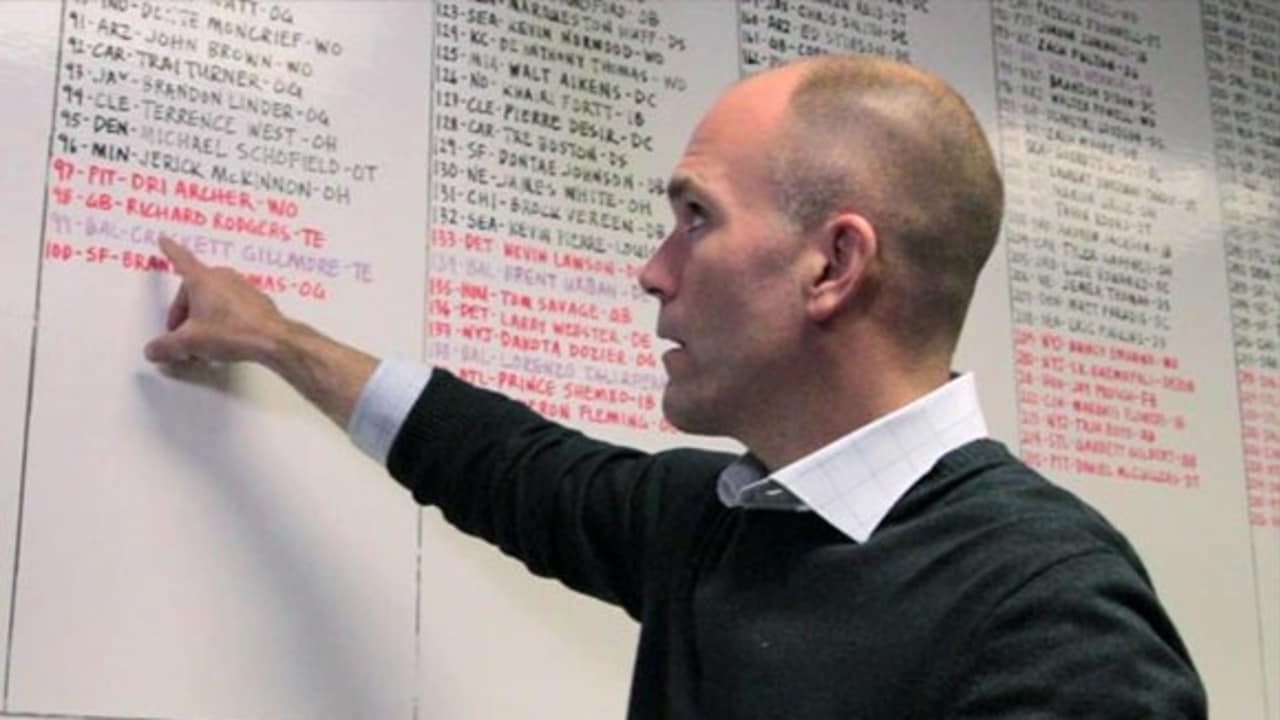Article submitted by Guest Blogger Nikhil Mehta
The Baltimore Ravens should seriously consider trading back in the draft next week. Based on their press conference on Monday, trading back from the 27th pick would be in the team’s best interest.
The Ravens are in a unique position heading into the 2021 Draft. For a Super Bowl contender, they have a lot of needs. Regardless of their potential, the wide receiver group beyond Marquise Brown and Sammy Watkins is unproven, and the team lacks a true ‘X’ receiver who can break the press and win at the boundaries. The loss of Yannick Ngakoue and Matt Judon has left a glaring hole at edge pass rusher. With RT Orlando Brown Jr. expected to leave Baltimore for a starting LT gig after next season, the Ravens have to plan for his successor as well. But the needs don’t stop there. The Ravens still don’t have a clear plan at C, and the aging interior D-Line has no clear future either. Defensive back injuries last season also show that you can never have enough cornerbacks in the NFL.
But the Ravens don’t need superstars at any of these positions either. They have young franchise players in QB Lamar Jackson, LT Ronnie Stanley, WR Marquise Brown, HB J.K. Dobbins, CB Marlon Humphrey, and LB Patrick Queen. They need complementary pieces who can contribute within a year or two of joining the team. And this draft is full of them.
So, with the board littered with quality players into the second and third rounds, the Ravens should rack up as many Day 2 picks as possible. Based on the trade value chart and similar trades back in recent years, it’s not unreasonable to think the Ravens could get early to mid-second and third round picks, or later picks in the second, third, and fourth rounds. They could even trade back a few picks in the first, net additional picks, and then trade their new first-rounder again, amassing as many second and third round picks as possible.
There is likely no game changer at 27. Only Minnesota WR Rashod Bateman is a no-brainer for the Ravens with the 27th pick. Bateman checks all the boxes for a prototypical ‘X’ receiver with his size, release, and route running. But it’s unlikely he’s available by the time the Ravens pick. More likely, they’ll be looking at an array of edge rushers, as well as LSU WR Terrace Marshall, Jr. All of the edge rushers have at least one legitimate concern, from lack of production, to injury history, to lack of development as a pass rusher. Marshall is very talented, but I’m not sure he’s the answer for the Ravens at wideout.
Having more picks has its benefits. It frees up the Ravens to approach the draft from a best player available strategy, which has been their M.O. in past drafts. In fact, they draft better when they go with BPA rather than try to pick solely for need. With more picks, they’ll still be able to fill their needs.
There’s a financial incentive too. Lamar Jackson is due for a massive extension, and Mark Andrews will likely command a decent sum as well. The Ravens need as many quality players on rookie contracts as possible to maximize their Super Bowl window.
There are a ton of players across those positions of need who should be available in the second, third, and fourth. I’d rather have, say, Carlos Basham Jr. and Brady Christensen rather than Jayson Oweh, or Dyami Brown and Joe Tryon than Terrace Marshall, Jr.
Eric DeCosta said the draft is “a luck-driven process. If you have more picks, you’re going to hit on more good players,” adding that the team has identified about 200 “draftable” players. This line of thinking suggests that the Ravens should trade back to get more chances on hitting on more of those draftable players.
{{CODE1}}










